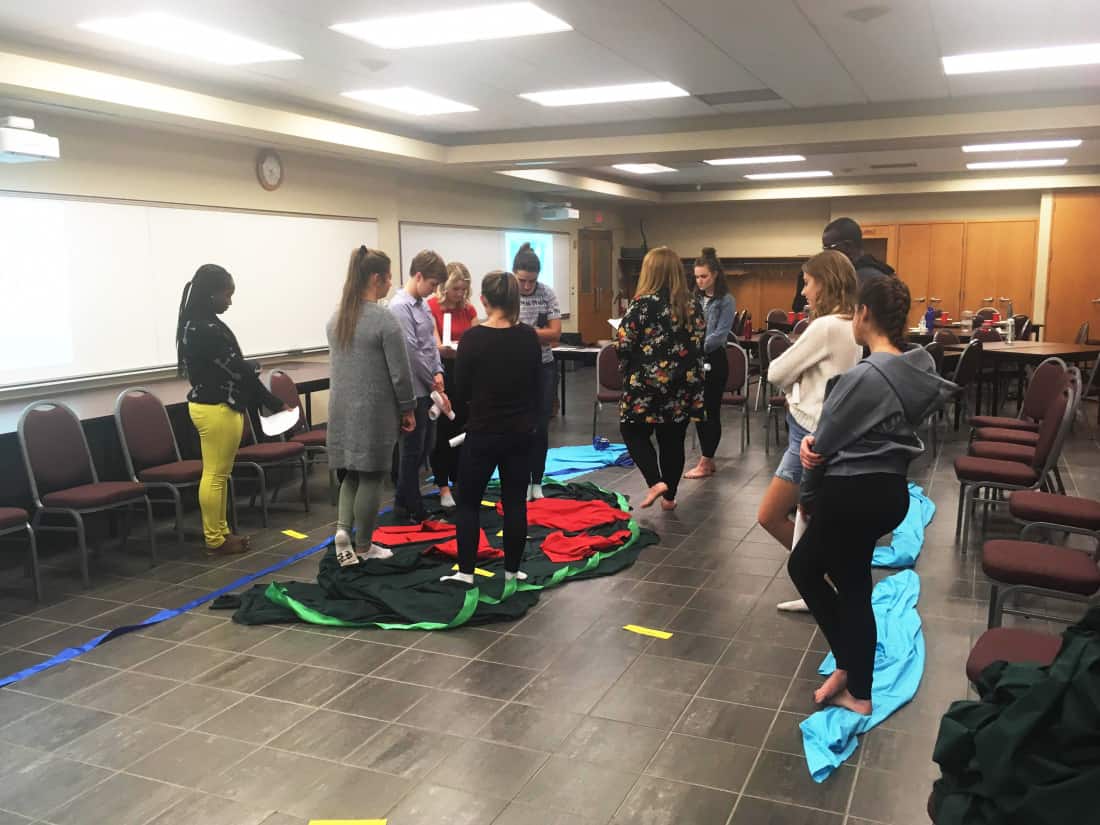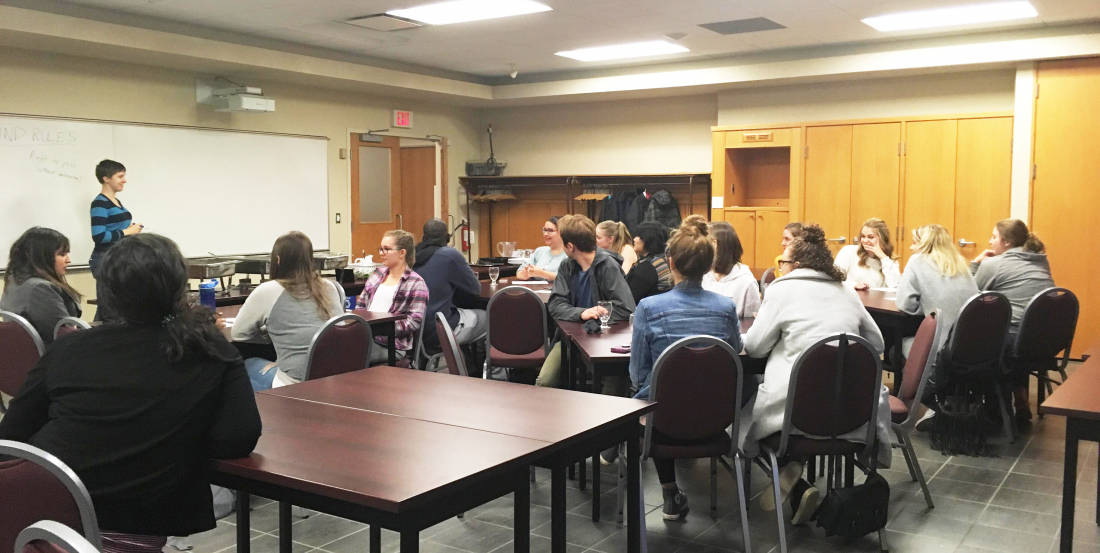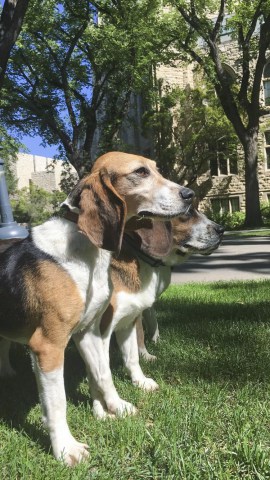
For the past few years, the University of Saskatchewan has been putting resources into increasing experiential learning opportunities for students. Learning through direct experiences has benefits to the students, the community and the university as a whole, and goals related to growing this area will be part of the university’s targets for 2025.
Experiential learning is a methodology characterized by direct experience and interaction with a course’s subject matter followed by a reflection and assessment of the experience. At the U of S, the four main areas of experiential learning are undergraduate research, field-based instruction, community-engaged learning, work experience and study abroad programs.
Experiential learning was made a priority for the university’s teaching and learning portfolio in 2012 when the third integrated plan was released. This document outlined the university’s plans for the years 2012 through 2017: the last of its kind before the university switched formats in 2018 and released the University Plan 2025 as the new planning statement.
The integrated plan committed to increasing the number of students engaging in experiential learning by 20 per cent by 2017. It also set a goal for a minimum number of undergraduate courses with experiential learning involving Aboriginal communities or organizations. In the 2012 multi-year budget framework, $3.5 million was set aside for the Academic Priorities Fund, meant to finance the priorities outlined in the plan.
According to the 2017 Final Report, these two goals were for the most part achieved. Reportedly, there were issues with calculating the percentage of growth due to a redefining of the term “experiential learning” in the context of the university, but the Experiential Learning Fund established in 2011 made possible 49 projects in the period covered by the plan. Additionally, seven “courses or internships that provide undergraduate students with experiential learning opportunities involving Aboriginal communities or organizations” were started in 2013.
Nancy Turner, director of teaching and learning enhancement, says experiential learning is important to the university’s goals.
“That idea that we are all part of a university community of learners is really where experiential learning can help bring us together,” Turner said. “It focuses on learning as our endeavor rather than just employment — although, that learning will often lead to employment.”
Last year, 44 per cent of undergraduate students participated in at least one experiential-learning opportunity. Currently, Turner says increasing experiential opportunities connected to Indigenous knowledge as well as undergraduate research is at the forefront of her office’s efforts.
“For us to achieve our aspirations around Indigenization, decolonization, and ultimately, reconciliation, we need to think carefully about how we are incorporating Indigenous ways of knowing into the curriculum,” Turner said. “Undergraduate research is a priority area because … there are still so many questions that are not answered, and for students to engage in the process of discovery helps with learning but also with motivation.”
The university is also interested in increasing studyabroad opportunities. Peter Stoicheff, president of the U of S, has said he is expecting to see support towards student mobility in the 2019 provincial budget. Turner says the university’s interest in opening up study-abroad programs to more students through partnerships with the International Student and Study Abroad Centre is part of their commitment to internationalization.
“It’s about providing opportunities to students but also about doing some work toward the internationalization of the curriculum. It’s about helping students develop skills of intercultural competence. Although, we recognize that it’s not the only way that can happen,” Turner said. “There is additional funding available for study abroad in partnership with ISSAC to support the creation of these opportunities.”
Despite the funding available, studying abroad is typically the most costly way to participate in experiential learning. Caitlin Ward, manager of engaged learning at St. Thomas More College, says community-engaged learning offers similar benefits to studying abroad.
“You learn the same skills in terms of encountering communities — it’s the same thing on a smaller scale,” Ward said. “And with service learning, there’s the added bonus that it’s also serving the community.”
Ward has been working at the STM Engaged Learning office for the past nine years. Ward says communityengaged learning is a perfect match for the college, and in her time with the office, she has seen it grow in popularity.
“The year before I came in, about 130 students were involved in community-service learning. Now, we have doubled those numbers,” Ward said. “[CSL] works really well with our mission as a Catholic college. In our mission statement, it says that what we do is not an end in itself, but it’s supposed to find application for the greater good.”

Ward and Cooper Muirhead, a community-service learning assistant, work to connect community partners with courses offered at STM. Sometimes, the connections are easy to make. For example, an English class about the culture of disability partners with L’Arche Saskatoon, SaskAbilities and Sherbrooke. Sometimes, they have to get creative. For example, a class about medieval romances that covers notions of honour and masculinity was partnered to work with people who were incarcerated and coming out of incarceration.
Ward says it’s important to make these connections to ground knowledge learning in practical application. That way, both the students and the community benefit.
“Students understand things better because they are not only learning theoretically or at an abstract level,” Ward said. “It’s easy to become very focused on your own classes and your own life, but going out to the community and serving needs is good for you, and it’s good for the community.”
CSL partners with a variety of populations: newcomers, intercity youth and elderly communities, among others. Currently, CSL is offered in approximately 25 courses a year at STM, which according to Ward, is about the maximum capacity of their two-person office. One of the office’s goals for the future is to build relationships and partnerships with Indigenous peoples. Ward says they are one of the various units at STM working toward this goal.
“As a Catholic college, we understand that we have a particular responsibility. We have been an agent of damage, historically, and so, it’s important for us to repair some of those relationships and work to address the damage that our church has caused,” Ward said. “We are working slowly on developing connections with reserves and First Nations populations.”
This will not be an immediate change, though. Ward says the engaged-learning office will take its time to make sure they open the right programs.
“That’s something that we want to do slowly because we want to do it well. It’s easy to want to get programming going because we should and it looks good, but we don’t want to cause more damage by not being considered,” Ward said. “We don’t want to open a program that’s not going to be productive.”
Thinking about the future of experiential learning, Turner says that partnerships with Indigenous populations will also take precedence at the wider university level.
“Experiences connected to Indigenous worldviews will continue to be an absolute priority for the institution,” Turner said.
The University Plan 2025 identifies the growth of experiential-learning opportunities as essential for the achievement of one of its commitments — embracing manacihitowin, or respecting one another — but it does not mention specific targets or initiatives. Turner says that these will be determined in the upcoming learning, teaching and student experience plan.

“The University Plan was intentionally kept very high level, but you can see how experiential learning would fit within all those broad goals,” Turner said. “We are in the midst of creating a plan that will more clearly articulate goals around support of student learning.”
According to Turner, the university’s support of experiential learning will continue.
“There’s increasing momentum behind and interest in engaging in experiential learning,” Turner said. “One of the key priorities coming out of my portfolio is to increase opportunities for students to have more integrated learning, so that’s one area that I think we’ll see growth and investment in.”
Growing this area is not without its challenges as it is a relatively new model, but Turner says that the university has the resources to continue to increase experiential opportunities.
“It’s a change from a more traditional approach to teaching and learning. It can be more costly, and it’s sometimes logistically challenging,” Turner said. “But those challenges can be countered with the resources that the university is putting into this and the expertise within colleges and centres.”
Turner sees experiential programming as a uniting force for the university — a goal that all programs should embrace.
“[Experiential learning] has brought a great amount of collaboration and shared vision across the institution — everyone can contribute to the advancing of this goal,” Turner said. “It’s been fabulous to be part of it and to see it grow and remain a significant priority for the institution.”
Experiential learning in its various forms is a growing presence at the university. The opportunities are out there, so why not take advantage of them?
To find courses that include experiential-learning opportunities, go into the Advanced Search in the Class Search or Registration channels and select the “experiential learning” category under Attribute Type.
—
Ana Cristina Camacho / Staff Writer
Photos: Andrew Fehr / Supplied , Community Service Learning
/ Supplied , and Andrea Geiger